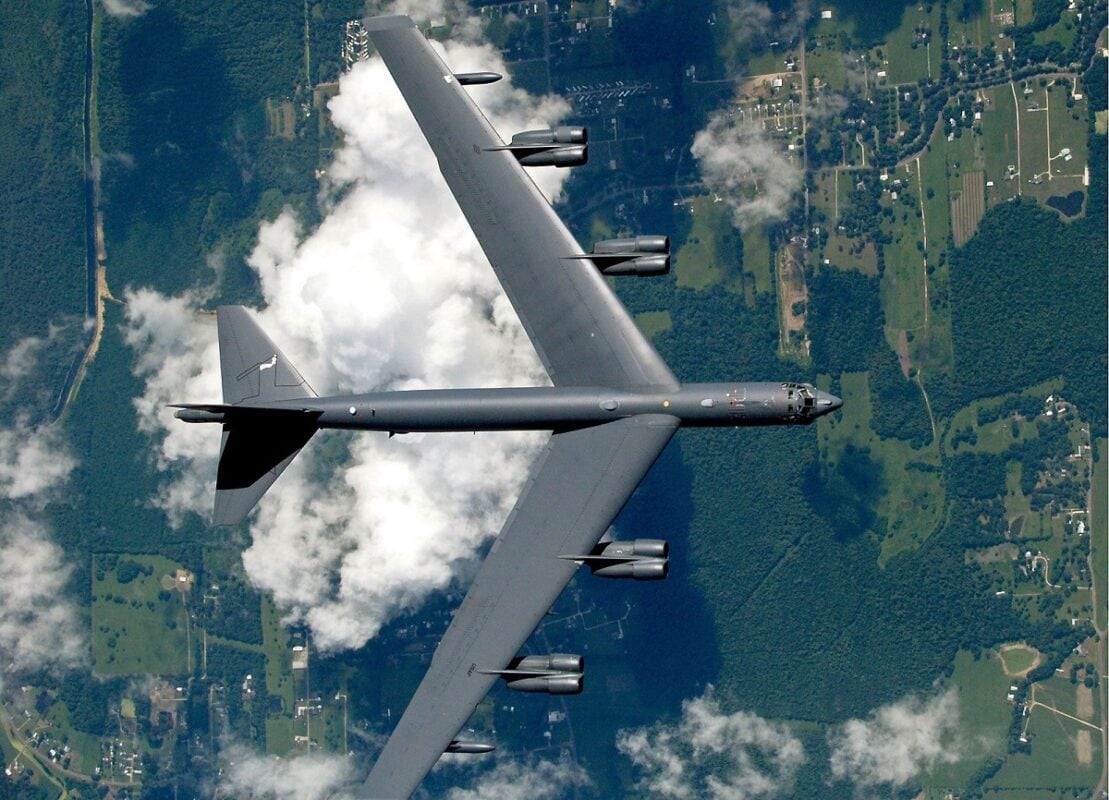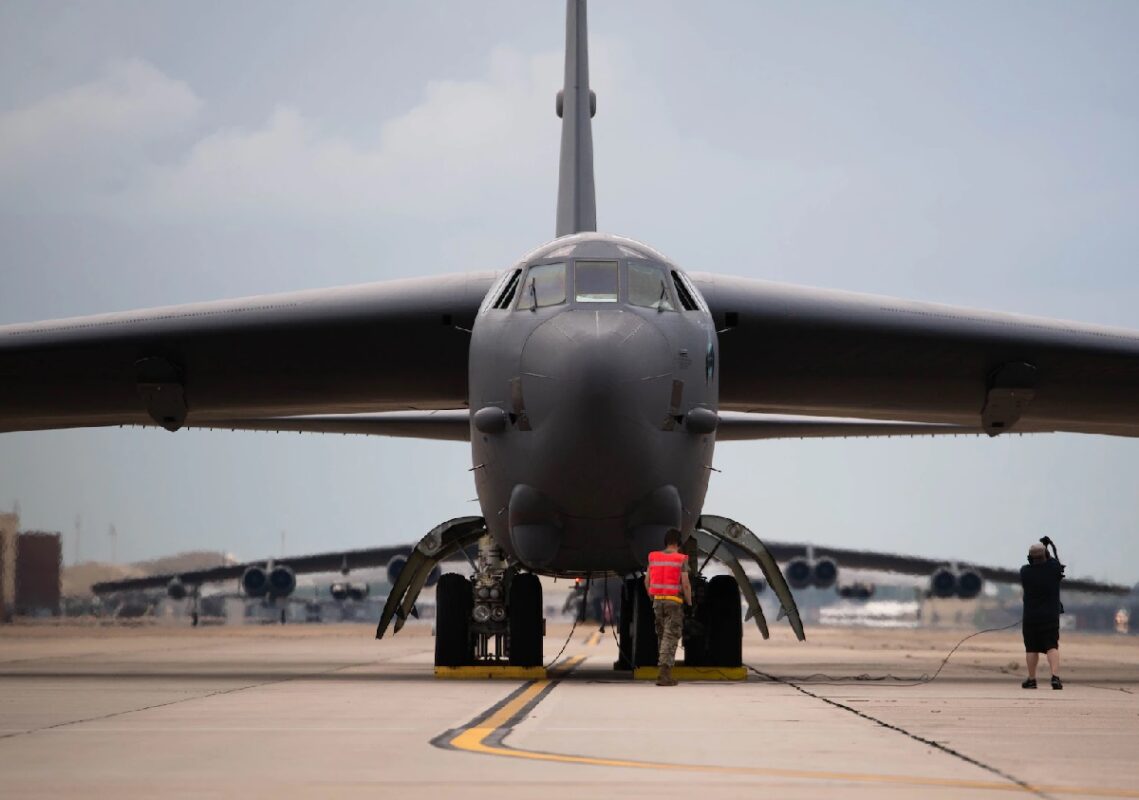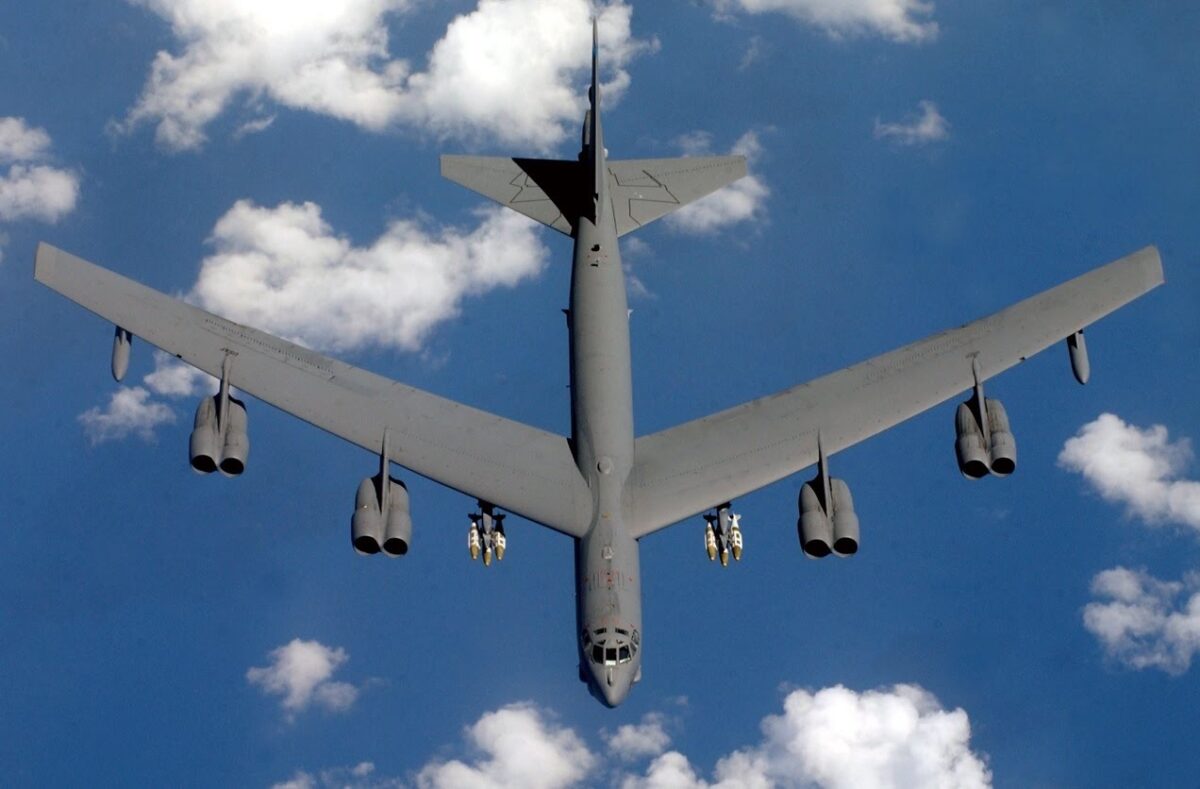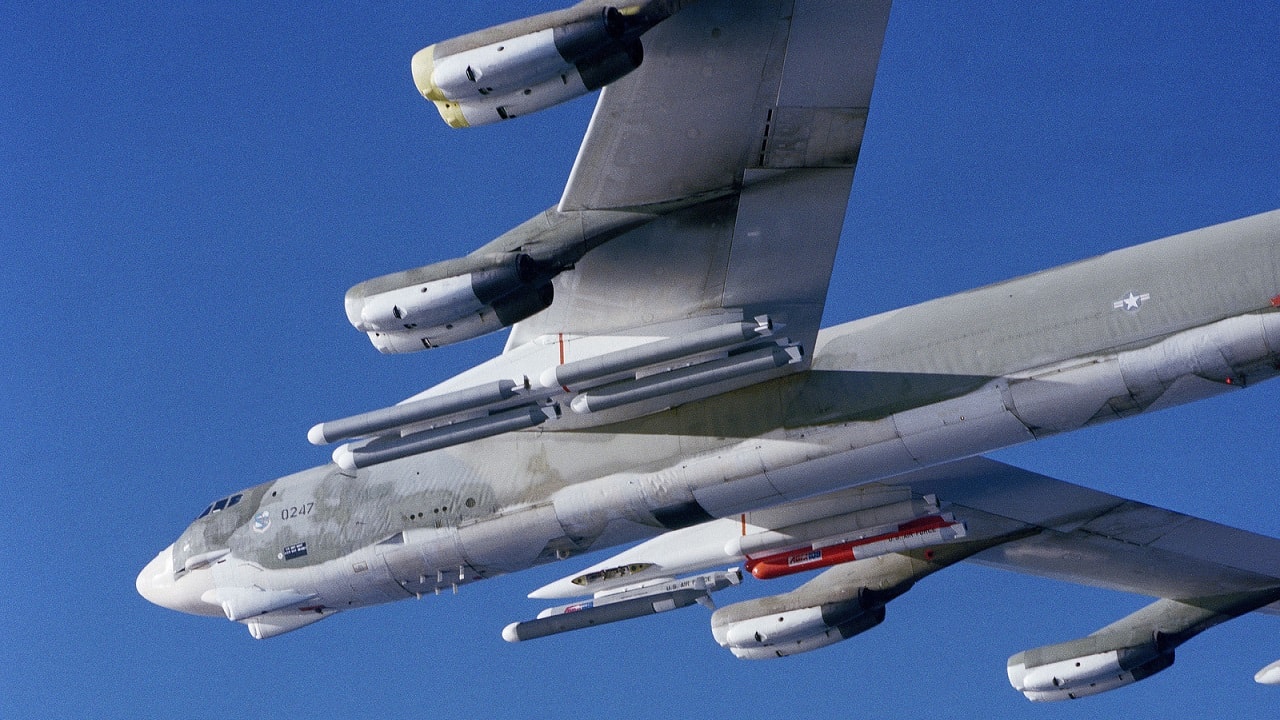Would a B-52 Survive a War With Russia or China Today? – In the era of fifth-generation stealth fighters, powerful air defense systems, and hypersonic missiles a question to ask is why the United States Air Force is still flying the Boeing B-52 Stratofortress. First introduced nearly seventy years ago, the bombers are older than any of the current aircrews – and likely those crews’ parents! The bombers remain the largest and most powerful bombers ever to be built, but does a seventy-year-old platform have a place in the 21st century?
The answer, simply put, is that the bombers may be old but they’re more than capable to take on today’s adversaries.
Evolved Warbird
First, we must consider that the B-52 Stratofortresses flying today aren’t exactly their grandfather’s bombers – and it is important to stress grandfathers, as it wasn’t until the 1990s that Kelly Flinn became the first female to pilot the aircraft. Moreover, it wasn’t until 2016 that the first B-52 had an all female flight crew.
Just as the crews onboard have changed in demographics, the bombers have evolved too, and been steadily upgraded. Much like the “Ship of Theseus,” where so many parts had been replaced that you question whether it is the same object, the B-52s that were flying in the early Cold War have been significantly upgraded that they’re not really 1950s aircraft anymore.
Along the way there have been notable changes. The B-52 models A to G featured defensive armament in the tail and quad .50-caliber machine guns, while H models employed a single M61 20 mm rotary cannon. The gunners who manned these weapons were enlisted personnel – the only enlisted airmen in a B-52 crew. Today’s Stratofortress bombers are equipped with a full range of air defense threat systems that include a combination of electronic detection, jamming and infrared countermeasures. Moreover, the B-52 can also detect and counter missiles engaging the aircraft from the rear.
The bigger consideration is that while we may think of the B-52 as a “bomber,” it doesn’t need to actually fly over an enemy’s territory as it once did.
The current H models can carry up to twenty air-launched cruise missiles (ALCM) including the AGM-86 ALCM, which was actually developed to increase the effectiveness and survivability of the strategic bomber. Each of the missiles can reach speeds of 550 mph (Mach 0.73) and have a reported range of up to 1,500 miles.
The B-52H can also carry Harpoon anti-ship and Have Nap missiles, which were designed for precision attacks against large targets from stand-off ranges.
Though Russia has some extremely advanced and quite capable air defense systems, including the S-400 “Triumf,” the fact remains that the B-52 could launch its weapons from well outside the range of those surface-to-air missile (SAM) systems. Additionally, the B-52 could be employed in the so-called “third day of war” along with the Lockheed Martin F-35 Lightning II as it functions in its “Beast Mode” where an enemies air defenses have been eliminated. That is when the B-52 could really bring the pain and rain down more traditional yet quite massive bomb loads on an enemy.
Armed With ARRWs
The B-52, which will likely remain in service into the 2050s, could also soon be equipped with even more advanced weapons.
In August 2018, the U.S. Air Force awarded a $480 million contract to Lockheed Martin for the development of an air-launched hypersonic weapon. The resulting missile, the AGM-183A ARRW (“Arrow”), underwent an initial captive carry flight test aboard a U.S. Air Force B-52 in June 2019.

Image: Creative Commons.

Image Credit: U.S. Air Force.

Image: Creative Commons.
While the service has hit some turbulence in the program, it is still a matter of when – not if – it is perfected. Once equipped and armed with hypersonic weapons, which can fly up to five times the speed of sound (Mach 5), the B-52 could be an even more deadly fortress in the sky.
Now a Senior Editor for 1945, Peter Suciu is a Michigan-based writer who has contributed to more than four dozen magazines, newspapers and websites. He regularly writes about military hardware, and is the author of several books on military headgear including A Gallery of Military Headdress, which is available on Amazon.com. Peter is also a Contributing Writer for Forbes.

